KEY FACTS
Terminology
- •
Malignant tumor of transitional epithelium extending from calyces to ureteral orifices
- •
a.k.a. transitional cell carcinoma
Imaging
- •
Hypoechoic infiltrative tumor in renal pelvis or ureter
- •
Wall thickening or intraluminal soft tissue mass
- •
Papillary or sessile mass
- •
Secondary hydronephrosis and calyceal dilatation
- •
Advanced tumor: Diffusely infiltrating renal mass, invading sinus fat but with preservation of renal contour
- •
Hypovascular on color Doppler
- •
CT or MR with contrast superior to US for diagnosis and staging
- •
MRU: Alternative to CTU in patients with iodinated contrast allergy
- •
Contrast-enhanced US may be option in patients unable to have enhanced CT or MR but limited for staging
Top Differential Diagnoses
- •
Renal cell carcinoma
- •
Lymphoma
- •
Blood clot or hemonephrosis
- •
Other causes of obstruction or urothelial thickening
Pathology
- •
10% of all renal tumors: Renal pelvis: 8%; ureter: 2%
- •
Multifocality with synchronous and metachronous tumors; most common in bladder
- •
Highest recurrence rate of any cancer
- •
Risk factors include: Tobacco use, chemical carcinogens, recurrent urinary infections and stones
Clinical Issues
- •
Gross or microscopic hematuria (70-80%), flank pain (20-40%), lumbar mass (10-20%)
- •
Peak incidence: 70-80 years (M:F = 3:1)
- •
Most common sites of recurrence for upper tract urothelial carcinoma include bladder (22-47%) and contralateral collecting system (2-6%)
Scanning Tips
- •
Look for upper tract lesions in setting of bladder cancer
- •
Use color Doppler to differentiate tumor from clot/debris
- •
Follow dilated collecting system to point of transition and look for pathology there
 and the proximal ureter
and the proximal ureter  . Hydronephrosis ± dilated calyces are commonly associated with upper tract urothelial carcinoma.
. Hydronephrosis ± dilated calyces are commonly associated with upper tract urothelial carcinoma.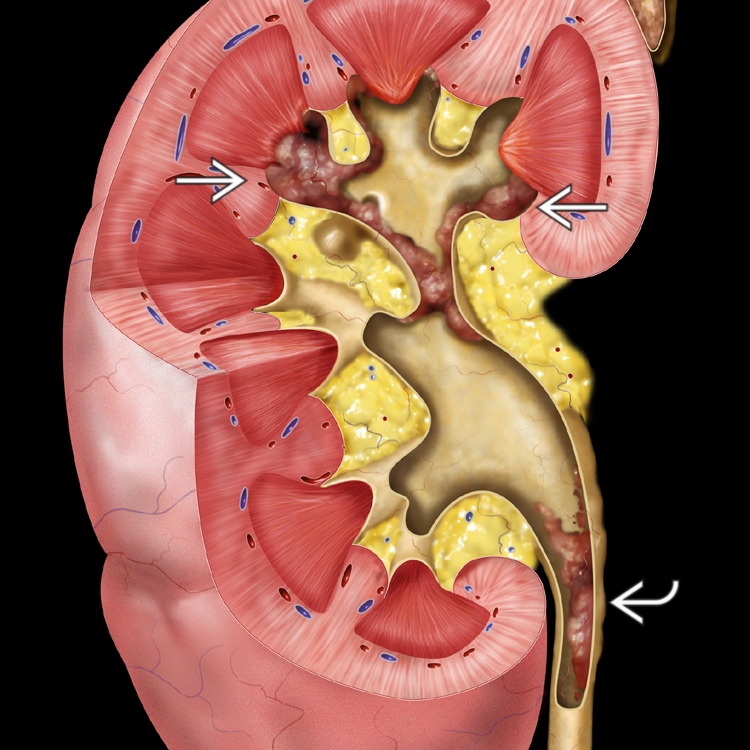
 and cortical loss
and cortical loss  secondary to a poorly defined hyperechoic mass in the renal pelvis
secondary to a poorly defined hyperechoic mass in the renal pelvis  . The patient had liver metastases from this upper tract urothelial cancer.
. The patient had liver metastases from this upper tract urothelial cancer.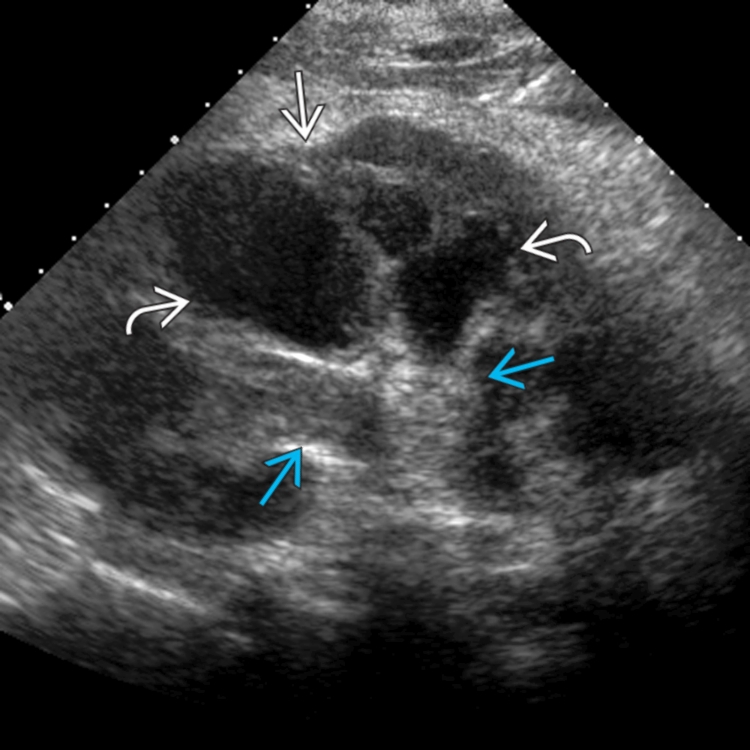
 . Smaller tumors may be occult on ultrasound.
. Smaller tumors may be occult on ultrasound.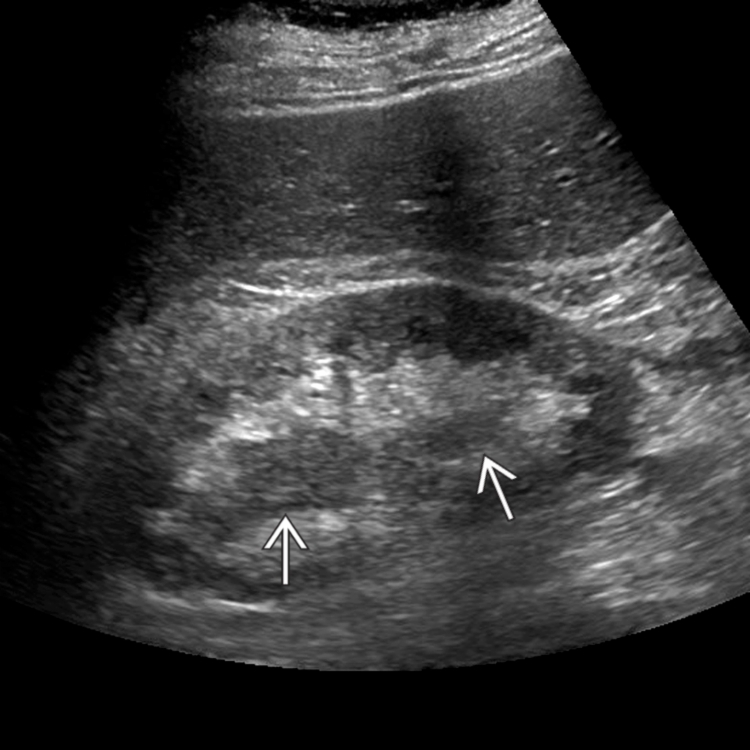
 extending into the calyces. The contralateral renal pelvis
extending into the calyces. The contralateral renal pelvis  was normal.
was normal.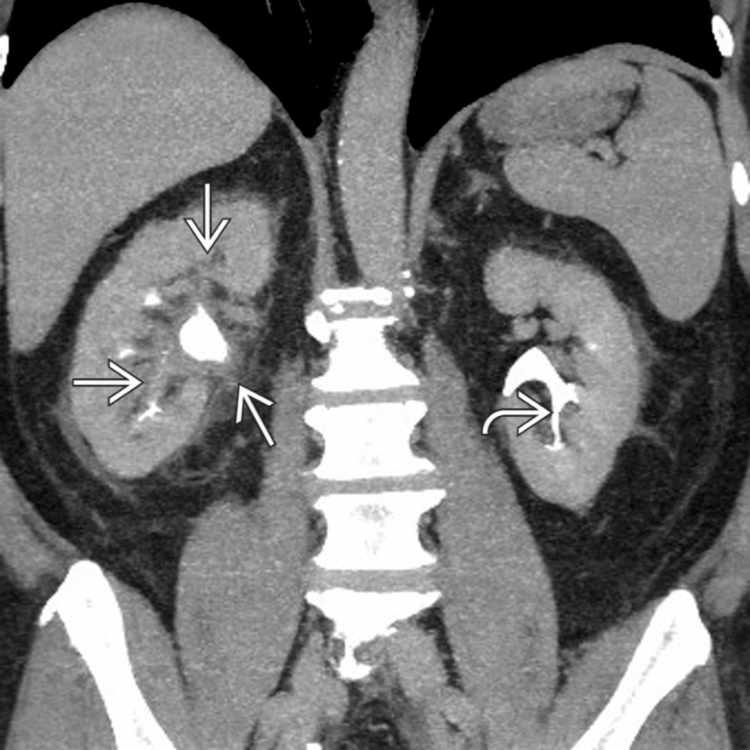
 with complete loss of normal architecture. A lobulated/papillary hyperechoic mass
with complete loss of normal architecture. A lobulated/papillary hyperechoic mass  extends from the renal pelvis into calyces.
extends from the renal pelvis into calyces.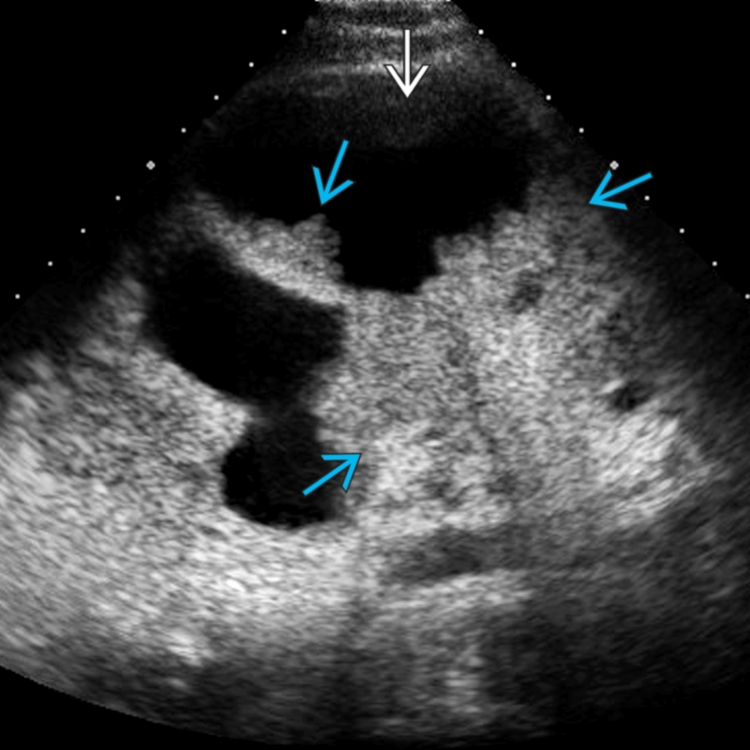
 extends into the calyces. There is severe hydronephrosis and cortical thinning
extends into the calyces. There is severe hydronephrosis and cortical thinning  as well as hepatomegaly and liver metastases
as well as hepatomegaly and liver metastases  .
.
Stay updated, free articles. Join our Telegram channel

Full access? Get Clinical Tree








